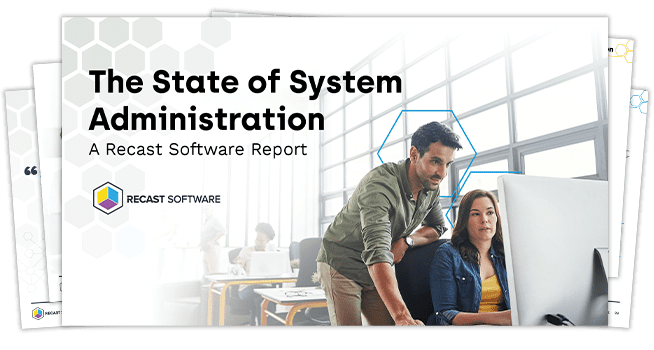Application Management and Patching
Why Application Management Is the Critical Frontier in Digital Employee Experience (DEX)
After 15+ years helping teams across the public and private sector with digital transformation, end-user computing, and workplace strategy, one thing is clear: even with modern infrastructure, application management is still make-or-break for DEX.
Organizations are under constant pressure to deliver better, faster, and more secure digital experiences. Digital Employee Experience (DEX) is now a top strategic priority—for IT and for the business. Most teams have already invested in collaboration platforms, endpoint refreshes, and network modernization.
Yet one bottleneck still quietly undermines these efforts: application management.
If the digital workplace is the stage, applications are the tools, props, and instruments employees need to perform. Without them, or without them working properly, productivity grinds to a halt.
Why Applications Matter Now
Consider:
- How many core business processes in your organization are impossible without the right applications?
- How long can an employee be productive without access to their key tools?
- What happens to customer experience if those tools fail—or don’t show up on time?
Applications are the crucial link between IT infrastructure and business outcomes. They are the means through which employees interact with data, serve customers, and get work done.
I’ve seen this first-hand—projects delayed for weeks because a critical application wasn’t packaged for the right device type, or because a multi-environment rollout stalled on compatibility issues. Those delays don’t just frustrate IT teams—they ripple out into lost productivity, customer dissatisfaction, and missed opportunities.
When apps are delayed, outdated, misconfigured, or inconsistent across devices, the impact is immediate: lost time, frustration, security gaps, and missed business opportunities.
The New Complexity
Getting the right apps to the right people on the right device has never been more complex:
- Hybrid work puts users anywhere—home, office, or on the road—often on multiple devices.
- Device diversity spans Windows, macOS, virtual desktops, BYOD, and traditional corporate endpoints.
- Security expectations now require constant patching, access controls, and compliance audits.
- App sprawl makes packaging, testing, and deployment more resource-intensive than ever.
Across industries—from healthcare and education to global retail—the root causes are the same. In many organizations, application tooling and processes haven’t kept pace. Legacy deployment systems, fragmented endpoint management, and siloed workflows lead to inefficiency, inconsistency, and rising operational costs.
The Impact on DEX and Business Outcomes
If DEX is about enabling people to work without friction, then poor application management strikes at the heart of the mission.
The consequences include:
- Slow onboarding: New starters wait for apps before they can contribute.
- Lost productivity: Time lost to updates, failed installs, or missing functionality.
- Higher support costs: More help desk calls for basic fixes or installs.
- Compliance gaps: Unpatched or inconsistent versions increase risk.
- Shadow IT: People find their own tools—often insecure—to bypass delays.
After advising on large-scale app modernization and rapid onboarding, we see these issues aren’t isolated—they’re systemic. And unless addressed, they erode both the employee experience and the organization’s ability to respond quickly to change.
If Applications Are This Critical . . .
If apps are central to employee experience—and business performance—the question is simple:
What must be in place to ensure application management supports, rather than hinders, DEX goals?
Consider whether your current approach delivers:
- Speed: Can you deploy any app to any user, anywhere, in hours—not days or weeks?
- Consistency: Is the experience the same across devices, operating systems, and locations?
- Resilience: Can you adapt quickly when business needs or environments change?
- Security and compliance: Are apps up to date, patched, and set up according to policy?
- Operational efficiency: Do packaging, deployment, and updates minimize effort, cost, and errors?
Without these foundations, even advanced DEX investments get undermined.
What Modern App Management Looks Like
Forward-looking organizations are rethinking their approach, building application strategies around:
- Deliver across platforms—physical, virtual, and cloud.
- Unify packaging, testing, deployment, and updates.
- Automate to cut manual effort and speed delivery.
- Integrate governance for full visibility and control—who gets what, when, and how.
- Design for users: speed, reliability, and easy access.
I’ve seen the difference this makes in practice. When organizations move from fragmented, reactive management to a unified, proactive model, onboarding time drops from days to hours, updates run without disruption, and support tickets fall.
Good news: you don’t need to rip and replace to get there. The goal isn’t to start over—it’s to evolve, streamline, and connect what you already have.
The Next Step
The DEX conversation can’t ignore application management. The stakes are too high, the risks too costly, and the opportunities too valuable to leave on the table.
Across industries, the right approach cuts onboarding from days to hours, reduces support volume, closes compliance gaps, and gives employees the tools they need on day one—often without replacing existing infrastructure.
Too often, application management gets reduced to auto-patching or to endpoint tools never designed with apps at their core. These stopgaps may tick a compliance box, but they miss the bigger picture—often because decision-makers don’t see the full cost of poor app management or haven’t been part of the conversation.
Because apps connect your digital infrastructure to employee productivity, every gap—delivery, updates, access, governance—weakens that connection.
If there’s even a doubt about whether your application management is fast, consistent, and resilient under pressure, now is the time to act. Start by asking:
- Do the right users get the right apps on the right devices—without delay?
- Do updates and patches land without breaking workflows or adding risk?
- Do you use the right tools for the job—or just the ones you already have?
These aren’t theoretical—they’re the levers that decide whether your digital workplace is an advantage or a daily frustration.
If you’re ready to explore what modern app management looks like in your organization, let’s talk—before the next onboarding cycle, security incident, or audit exposes the cracks.



























